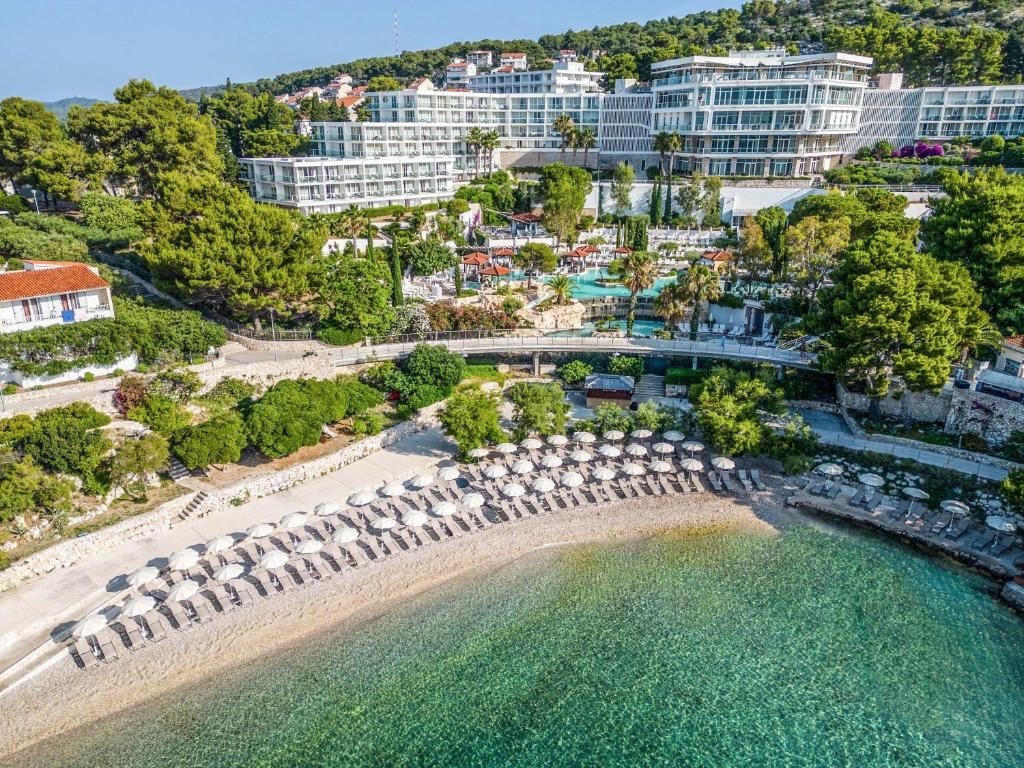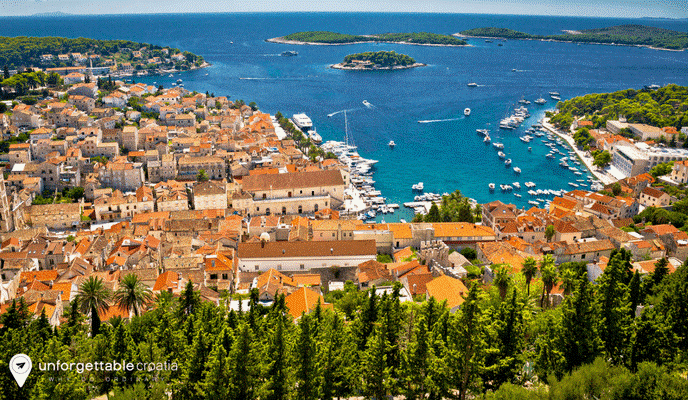How to get to Hvar:
The best way to get to Hvar from Split:
The town of Hvar on the island of Hvar is very well connected with Split by speed boats (catamarans) taking approximately 1 hour for the price of ~25 EUR. The catamarans dock right in the heart of Hvar town, and from there it's a pleasant 10-minute walk along the seaside to reach the conference venue.
Three companies operate between Split and Hvar and for more information, please visit their websites:
We suggest purchasing your ticket online.
Additionally, there is a ferry service from Split to the port of Stari Grad with a journey time of about 2 hours. The port of Stari Grad is 18 km from the town of Hvar. From the port of Stari Grad to Hvar, one can take a bus or taxi. This ferry line is exclusively operated by Jadrolinija.
How to get to Split:
- By plane: Split can be reached directly or via Zagreb from all world airports. Split airport is 30 minutes by bus from the city centre.
Easy jet has a direct flight Geneva-Split-Geneva. In order to get to the Split center, where the Ferry port is located, you can take the airport shuttle bus with a price of 8 EUR or take a texi. It is strongly recommended to take Uber or Bolt because other taxi drivers can charge you any price. Price with Uber/Bolt is around 30 EUR.
- By ship: The Port of Split is connected daily Ancona or Bari (via Dubrovnik). For more information please visit Jadrolinija or BlueLine web pages.
- By car: Driving from Zagreb to Split by a highway takes about 4 hours. Driving down from Trieste to Split along the Adriatic costal road (500 km) is a 6 to 8 hour drive with beautiful scenery most of the way. Note, however, that the Adriatic costal road is not a highway!
Visas:
For most of the countries there is no need for visa. Basic information about the visa regime between the Republic of Croatia and all other countries can be found at
Croatian Ministry of Foreign Affairs and European Integration. A letter of invitation can be provided upon request. Please take visa processing times into account.
Money and currency:
All major credit cards are accepted. There are number of banks and exchange offices nearby. Croatian currency is euro (EUR).
Conference venue:
Conference will be held in Hotel Amfora in the center of Hvar, a 15 minute walk from the speedboat stop. Walking directions from Google Maps can be found here. Or just type into google maps Bonj Beach, 21450, Hvar and ask for directions to it.


Hotel Amfora
Webpage: https://www.suncanihvar.com/amfora-hvar-grand-beach-resort.html
Address: Ulica biskupa Jurja Dubokovića 5, 21450 Hvar, Croatia
Phone: +385 21 750 300
GPS coordinates: 43°10'24.0"N 16°26'02.9"E
Hvar

The island of Hvar is the queen of the Croatian Dalmatian islands. It has been famous since the antique because of its important strategic and nautical position, the rich of the various historical periods, the culture and natural monuments and the literature.
Thanks to the mild climate, the warm winters and pleasant summers Hvar receives many guests, scientists and travellers, who are attracted by the dense mediterranean nature, rich tradition and arhitecture, and nightlife.
While separation from the mainland can sometimes be a handicap, it also provides some protection from the factory chimneys and other misfortunes which come with civilisation. Instead, there are vast fields of lavender, ancient olive trees and vineyards, in immaculate harmony between man and nature.
Hvar has celebrated 140 years of organised tourism, and today it is considered to be one of the 10 most beautiful islands in the world.
Rich cultural and historic heritage of Hvar, that dates back to pre-historic times, unique gastronomy, beautiful beaches and bays , crystal blue sea, high quality accommodation in apartments and rooms at private houses, hotels, and the hospitality of the local people are the guarantees of a holidays in Hvar you will always remember.
More information about Hvar:
Split

Split is a beautifull historical city on the Dalmatian coast. It was founded by the roman emperor Diocletian (a.d. 244 – 313) who built a magnificent palace where he retired after his abdication (a.d. 305). This palace is at the heart of the present-day city of Split and is one of the best preserved monuments of the late roman imperial period, with its peristil, mauseleum, temple of Jupiter, roman walls and gates. The mausoleum of the emperor was transformed into the cathedral of Saint Dujam, patron of the city, in the 7th century. The roman palace and the neighbouring medieaval, renaissance and baroque city are on the list of UNESCO sites of human cultural heritage since 1971.
The modern city of Split, which through centuries grew-out from this palace, has today about 250 000 inhabitants and a modern University with about 20 000 students. The city has a number of galleries (the gallery of the world fameous sculptor Mestrovic, born near Split, in particular), a renowned archeological museum and an opera house. Split is connected by air to major european cities, by roads (a coastal road from Trieste and with a connection to the new Zagreb-Split highway) and by sea to croatian and italian harbours on the Adriatic. It is also the main harbour for boat connections to the entire dalmatian archipelago and to cities of Hvar, Korcula and Dubrovnik.
A few kilometers from Split are the archeological remains of Salonae, capital of the Roman provice of Dalmatia. Close to the Split airport, about 25 km from Split, is the beautifull and picturesque small medieval and renaissance city of Trogir, with cathedral of St. Lovre, one of the most beautifull cathedrals on the dalmatian coast. Trogir is also on the UNESCO list since year 1997.
More information about Split:
